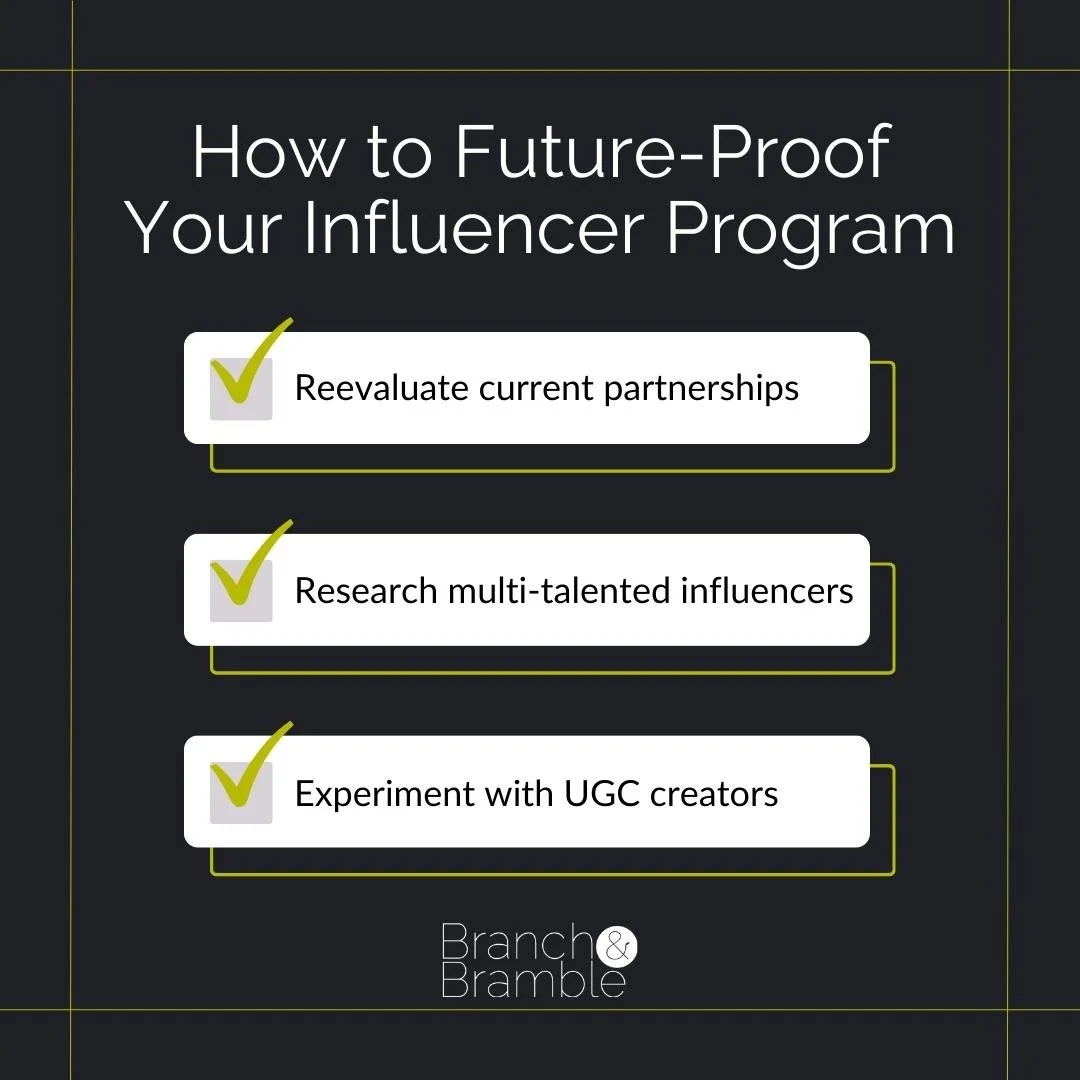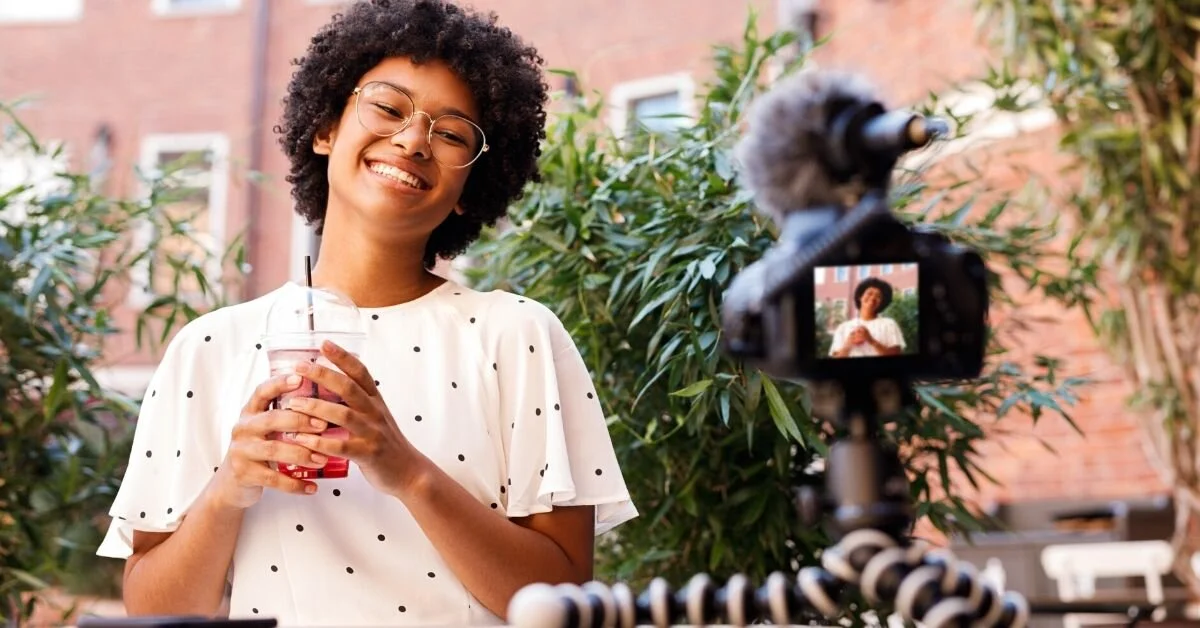Why Influencer Trust is Down & What You Can Do About It
12 MIN READ
For years now, influencers have been the golden ticket to brand awareness and consumer adoption. The right exposure from the right influencer can skyrocket your brand from being unknown to completely sold out—sometimes in a matter of hours. But as with any trend, the tides are shifting and consumers are falling out of love with the influencers they once followed religiously. New reports suggest that up to 81% of consumers have held a negative opinion of a brand for their use of influencers.
While this survey collected data from a small sample of American consumers, influencer fatigue is a real problem we’re seeing as social media users become disillusioned by influencers who sell a lifestyle that is unattainable to most people, particularly in this economy.
WHY NO ONE TRUSTS INFLUENCERS
We see it time and time again: You begin following someone on social media for their relatable content—something about their life resonates with you. It can be as simple as a drugstore makeup tutorial that makes applying makeup beginner-friendly or something more meaningful like learning coping skills from a fellow neurodivergent person that changes the trajectory of your life. But slowly, as more and more followers trickle in, the original creator’s content starts to change. The makeup switches to high-end, luxury products that aren’t realistic for your budget. Or the neurodivergent resource starts posting content in collaboration with brands like BetterHelp, a company well-known for violating patient privacy and selling patient data to third parties.
And just like that, your trust in the influencer starts to dissipate. They’re no longer the person you related to. Even through the lens of “aspirational content,” many people have difficulty buying into this narrative because the lifestyle that these influencers are selling doesn’t feel attainable anymore. The logic jump is too great and no amount of manifestation or embracing being delusional can overcome that.
It’s important to note that we may still follow these people and enjoy their content, but our trust in their recommendations is gone—making them a poor partner for brands looking to build trust with their target audience.
Does all this mean that influencer marketing is dead? Absolutely not. Instead, we’re entering a new age of influencers, and if you want your brand to stay ahead, we’d recommend you keep reading.
THE NEW AGE OF INFLUENCERS
As influencer distrust continues to build among consumers, a shift in influencer hierarchy is in the works. Already Hubspot reports that 80% of influencer marketers work with influencers with under 100K followers, while only one in ten work with celebrities or mega influencers (+1M followers).
With this in mind, three types of “influencers” are emerging as industry leaders: nano/micro-influencers, content creators, and UGC creators. These groups have many similarities, but there are distinct qualities for each that can make them align better with your brand goals. And yes, we know the differentiation between influencer and creator is a little confusing, but for the sake of this article, let’s think of “influencer” as the overall group of people with there being both specific types of influencers and creators.
Nano & Micro-Influencers
By now nano and micro-influencers aren’t anything new. Depending on your definition, these influencers generally can have between 1,000 and 50,000 followers. But what makes them stand out from their macro, mega, or celebrity counterparts is their engagement and community. Under 50K followers is generally the sweet spot for creating aspirational content that attracts a loyal following but still feels relatable to the average consumer. These individuals are the bridge between influencer marketing as we’ve known it and the shifts in the industry on the horizon.
Content Creators
Influencer Marketing Hub distinguishes content creators from influencers as people who create “bespoke content about the things that interest them.” The primary focus is on storytelling rather than follower growth. That’s not to say that they don’t care about performance metrics, but they put more emphasis on sharing a passion with their followers. Their following can vary greatly, even well into mega influencer territory, but trust continues to remain higher with these creators as their content generally stays focused on the topic that they first gained notoriety for.
UGC Creators
User-generated content (UGC) is highly sought after by all brands. A real person using your product or service in the wild is far more likely to have a potential customer considering your brand than a highly-stylized graphic or product ad. Unfortunately, UGC can be hard to get and even harder to build a content library with. That’s where UGC creators come in. They create content that looks organic, but in reality, brands are paying them to create the photos and videos that the brand will then post on their social channels. It’s a career path that’s on the rise, particularly among Gen Z, as a relatively easy way to make money off their social media and creative talents.
While working with UGC creators can feel like an ethically gray area, there are simple ways that brands can ensure they’re working with UGC creators in a way that accurately reflects their brand to consumers. The biggest and most important step is partnering with a UGC creator who creates high-quality content in your industry and takes the time to understand your brand. This way the UGC creator is accurately representing your product or service in their content in a way that won’t mislead consumers. It’s also important to be clear in your expectations around video content and ensure that your UGC creator isn’t feeling forced to make any false claims.
INFLUENCER CONTENT SHIFTS
In addition to opportunities to partner with more UGC creators, you can expect to see shifts in the overall way influencers and creators are producing content. Creators are moving away from what we have come to think of as personal brands and niches and are instead repackaging these concepts in a way that’s more aligned with the human experience.
Values > Authenticity
Perhaps one of the biggest disservices we’ve all done to ourselves on social media is expecting authenticity from influencers and ourselves. We demand people show up online as their true selves, often putting the quest for authenticity over internal well-being or mental health.
Dylan Mulvaney’s “Days of Girlhood” is an excellent example of how the expectations of authenticity (both external and internal) can lead to a loss of sense of self and confusion over our own identities. During Dylan’s Days of Girlhood, she shared with millions of people on TikTok her transition as she stepped fully into her life as a trans woman. She shared the ups and downs of her journey with her followers throughout 2022 and was lauded for authenticity and how much of herself she gave to her audience. This spring, Dylan participated in a Budweiser campaign that received widespread, bigoted backlash that ultimately led to her taking a step back from the TikTok limelight. When she returned from her TikTok hiatus, she reflected on the struggles she dealt with when it came to sharing her journey online and what she owed to her followers. Dylan’s message is now one of prioritizing her well-being first while still connecting with the community she has built in meaningful ways.
In Dylan’s journey, we see the toll that authenticity requires of us. A healthier yet still meaningful way to create content is to focus on what aligns with your brand or personal values. Communicating fewer aspects of her journey while still advocating for the trans community doesn’t make her any less authentic. Instead, it highlights her journey and what is important to her without having to bare the inner workings of her heart.
Series Over Niches
While I don’t think niches will ever truly disappear entirely, influencers and creators are continuously moving away from their highly targeted niches to incorporate more themes and series. This allows people to pursue multiple facets of their personalities and explore different interests while still staying true to the content they’re best known for.
A great example of implementing series content is KC Davis, known as @domesticblisters on TikTok. KC’s channel’s subject matter focuses on what she calls “struggle cleaning,” which essentially means taking care of your home while also navigating mental health issues or neurodivergence. As part of her work, KC has written a book on the subject called How to Keep House While Drowning. While this is KC’s bread and butter, she also has several other well-known series on her channel. “If no one taught you” is a compilation of videos where KC shares life skills that people might not have been taught growing up or even as an adult. The series has included content on how to dress for black tie occasions or how to properly shower.
On a lighter note, KC also created a series called “Ruining my house” when she received negative comments on her videos about renovating her home. She approached the comments with humor while also encouraging people to decorate their homes in a way that makes them happy—not the trolls online. While these series have different subject matter than cleaning, they still align with her messages of empowering people who are struggling and teaching necessary skills.
Storytelling
A thread that’s common throughout all of these content shifts is storytelling. As influencers look for new ways to connect with followers online (and appease the almighty algorithm), more are leaning into the journey. What was once a “come with me to go jean shopping” has turned into “go thrifting with me for jeans that make me feel like an extra from Daisy Jones & the Six.” We’re no longer heading to the store to try on some pants; we’re part of an immersive experience that combines values and topics we love with a journey that feels replicable and relatable.
Even if you’ve never considered going outside and foraging a day in your life, TikToker Alexis Nikole might just have you changing your mind with her hilarious videos where she brings viewers along as she forages, prepares, and cooks local plants and fruits she finds in the wild. Not only is she educating her followers on how not to die or poison themselves while foraging, but she’s also adding layers of fun and humor that make her unique brand of storytelling compelling and entertaining.
Alexis’s content takes a seemingly unattainable subject matter (because only people with truffle pigs go foraging, right?) and makes it feel exciting and like something anyone could do. By making you part of her journey, you become a part of the story and might just end up with random evergreen tree parts fermenting in your kitchen…not that I have any experience in this.
WHAT SHOULD YOUR BRAND DO?
You’ve made it this far and I’m sure you’re thinking, “Wow, all of this information is amazing, but what should I be doing for my brand?” Don’t worry, because I love the way you think, these are the simple next steps you can take to revitalize your influencer program.
Reevaluate your current partnerships
Just like with any relationship, make sure you do a deep dive into your existing program before you jump into anything new. Take stock of the influencer types you’re currently working with. Are you relying heavily on mega-influencers and celebrities? Could there be room to introduce new faces into the mix that embody the changes that are happening in the influencer industry? Whatever your evaluation reveals will let you know the steps you need to take to prep your program for the future of influencer marketing.
Research multi-talented creators and influencers
If your deep-dive into your current influencer program reveals that you’ve created an influencer spread of mainly mega-influencers and celebrities (not to be confused with content creators with large followings), now is the time to dive into the social channels you want your brand to grow on and look for voices in that space or spaces adjacent to it.
When it comes to identifying content creators, don’t be afraid to think outside the box. For our award-winning influencer program in partnership with America’s Best Racing, one of our influencers was a content creator most famous for making videos on TikTok styling crowns (yes, this kind of crown 👑). While the connection between the horse racing industry and crowns might not seem obvious at first, the allure of going from “CrownTok to the Triple Crown” was too amazing of wordplay to resist. Through her race-day-styling videos and behind-the-scenes looks, the creator ended up being one of the most successful individuals in the program and garnered millions of views and impressions on behalf of ABR.
Experiment with UGC creators
If your feed is feeling a little stale or you’re not getting the conversion you’d like from your content, it’s worth looking into UGC creators who specialize in your industry. Start by doing a quick keyword search on Instagram (type in “ugc creator”) and explore the different creators that could be a good fit for your brand.
Take a look at their media kit or portfolio if they have one available and see if their content is within your marketing budget. If they don’t have a media kit or website linked, send them an email and get the conversation started. The overall look and feel of your feed will be elevated in no time.
With so much change on the horizon for influencer marketing, the idea of updating your program or even creating one from scratch can seem daunting. The most important thing to remember as you begin to make changes is to ensure your brand values align with the influencer. A shared mission and ideology will lay the necessary foundation for a solid partnership that supports both of your brands’ goals. If you’d like support in building or scaling your influencer program, we’re only a contact form away.














